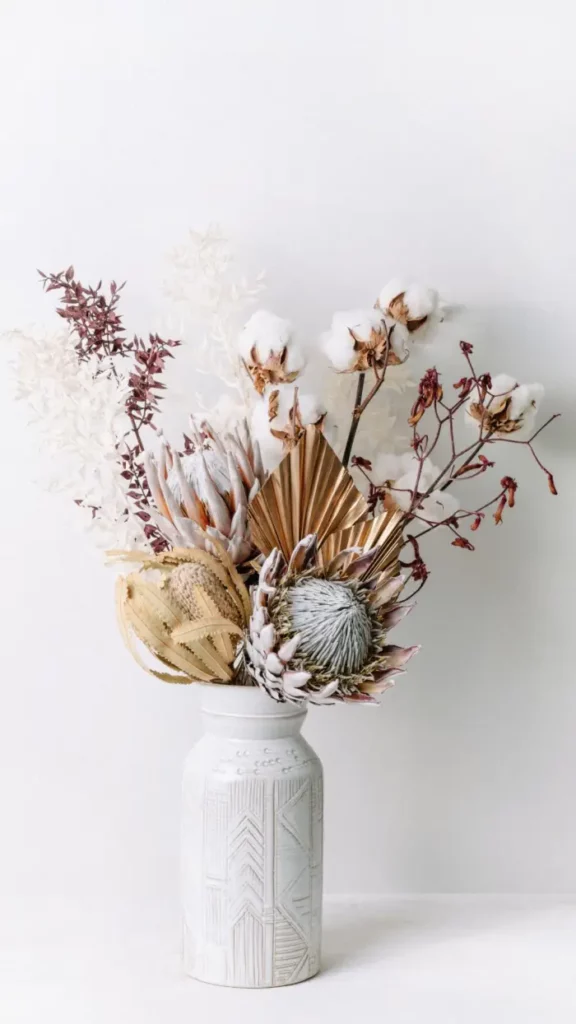Dried Flowers

Origin
Dried flowers are fresh flowers or foliage that have been preserved to extend their lifespan. The practice of drying flowers dates back centuries and is common in many cultures worldwide. Flowers are often air-dried, freeze-dried, or dried using silica gel to retain their shape and colour.
Popular origins for dried flowers include:
- Netherlands: Known for producing high-quality dried flowers like Cortaderia, Triticum, Papaver, Achillea & Helichrysum
- Italy: Famous for Lagurus, Ruscus, Lavender & preserved Eucaliptus
- South America: The biggest Cortaderia you can find.
Characteristics
Durability: Can last months or years if kept in proper conditions.
Texture: Often brittle, with a papery or fragile texture.
Appearance: Colors are usually muted compared to fresh flowers, often pastel or earthy tones.
Varieties: Includes , lavender, gypsophila, eucalyptus, pampas grass, lagurus, ruscus and many many others.
Care
Keep Away from Moisture: Store in a dry place as humidity can cause mould or fading.
Avoid Direct Sunlight: Prolonged exposure can bleach colours.
Dust Gently: Use a soft brush or hairdryer to remove dust on a cool, low setting.
No Water Needed: Unlike fresh flowers, dried flowers do not require watering.
Handle Carefully: Fragile stems and petals can break if handled roughly.
Blooming time
Dried flowers do not bloom; their aesthetic is static since they are preserved at their peak. However, choosing flowers dried at the right time ensures they retain a natural, beautiful look..











